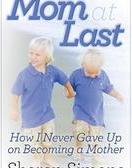By Rachel Lowry, Deseret News
Four-year-old Ella Varner sits between two women in a busy park in central Pennsylvania. On her left is her birth mother; on her right is her adoptive mother. The two women talk of cartwheels and preschool as they watch Ella with her sticky fingers and her face painted, one half a cheetah and the other half a tiger.

Ella has known both her birth mother and her adoptive mother since the day she became part of her adoptive family. As she grows into adulthood, her mother, Susan Varner, hopes to continue this level of openness, which as it turns out, is a rapidly growing trend, according to research published recently by the Evan B. Donaldson Adoption Institute.
“The era of truly closed adoptions is probably coming to a quick end,” said Adam Pertman, the institute’s executive director.
Ninety-five percent of all domestic adoptions are open in some form. The Donaldson survey of 100 infant adoption programs found that 55 percent of American adoptions were fully disclosed — meaning there is direct and ongoing contact between the birth and adoptive families — and 40 percent were mediated — meaning all contact is exchanged through an intermediary. Confidential adoptions constituted a mere 5 percent of placements by the surveyed programs over the past two years. As parents participate in this growing trend, being informed is crucial in navigating an open adoption.
The trend
Past studies show that adoptions have decreased since the 1970s. More than 8 percent of all premarital births were placed for adoption between 1952 and 1972. That percentage dropped to 2 percent between 1982 and 1988. It then dropped to less than 1 percent between 1989 and 1995, according to the National Survey of Family Growth.

As the number of adoptions has dwindled, the number of open adoptions has exploded. The Donaldson report found that 29 percent of adoption agencies don’t offer confidential adoptions at all, a surprise to Susan Livingston Smith, one of the study’s lead authors. “Honesty within and about adoptive families has grown enormously over the last several decades, even as the composition of those families has changed — and continues to change — significantly.”
With this alteration comes a paradigm shift, Pertman writes in his book, “Adoption Nation.” When hundreds of thousands of people embrace openness in adoption so “comfortably” and “extensively,” they are “collectively rewriting the American definition of the term ‘extended family.’ ”
“It’s another blazing neon sign proclaiming that the old order is being overthrown and a new future is being created.” Open adoptions, he said, are being reshaped to fit a mold that incorporates multiple adult role models integral to a child’s upbringing. While this line of thinking may seem like an attack on the traditional family, it probably isn’t.
Another bout of statistics, however, suggests that there may be other elements at play here. The number of international adoptions into the U.S. has tripled — from 7,093 in 1990 to 22,884 in 2004, Smith wrote to the Deseret News in an email. So, have foreign adoptions been climbing because parents in the U.S. want to avoid open adoption?
The reasons some adoptive parents choose international adoption are “complex and varied,” Smith said. Some adoptive parents fear that the birth family in an open adoption will try to reclaim the child and overturn the adoption. “Though this is extremely rare.”

Another reason for the rise of international adoptions is the falling supply of adoptable children in the U.S., the Population Reference Bureau suggested. Experts say the drop is due to multiple factors that may include the availability of legal abortion, increased access to contraception, decreases in the teen birth rate and reduced social stigma surrounding unmarried parenting.
The number of international adoptions, however, recently experienced a sharp decline, to 12,753 in 2009. An increased desire for openness in adoption may be a key cause, but the steep drop may also be the result of many “sending” countries closing down adoption programs, Smith said.

